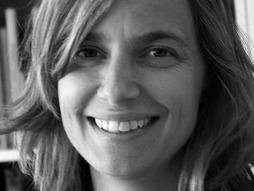Kate Orff on How The Oyster is an Agent of Urban Change
 Architect Kate Orff sees the oyster as an agent of urban change. Bundled into beds and sunk into city rivers, oysters slurp up pollution and make legendarily dirty waters clean -- thus driving even more innovation in "oyster-tecture."
Architect Kate Orff sees the oyster as an agent of urban change. Bundled into beds and sunk into city rivers, oysters slurp up pollution and make legendarily dirty waters clean -- thus driving even more innovation in "oyster-tecture."
Orff shares her vision for an urban landscape that links nature and humanity for mutual benefit.
Kate Orff asks us to rethink “landscape”—to use urban greenspaces and blue spaces in fresh ways to mediate between humankind and nature.
Kate Orff is a landscape architect who thinks deeply about sustainable development, biodiversity and community-based change—and suggests some surprising and wonderful ways to make change through landscape.
She is principal of SCAPE, a landscape architecture and urban design office with projects ranging from a 1,000-square-foot pocket park in Brooklyn to a 100-acre environmental center in Greenville, SC, to a 1000-acre landfill regeneration project in Dublin, Ireland.
Susan notes: Thanks to TED for making TED Talks downloadable and embeddable, and for providing the biographical information that goes along with them.
- Tags: architect community innovation learning